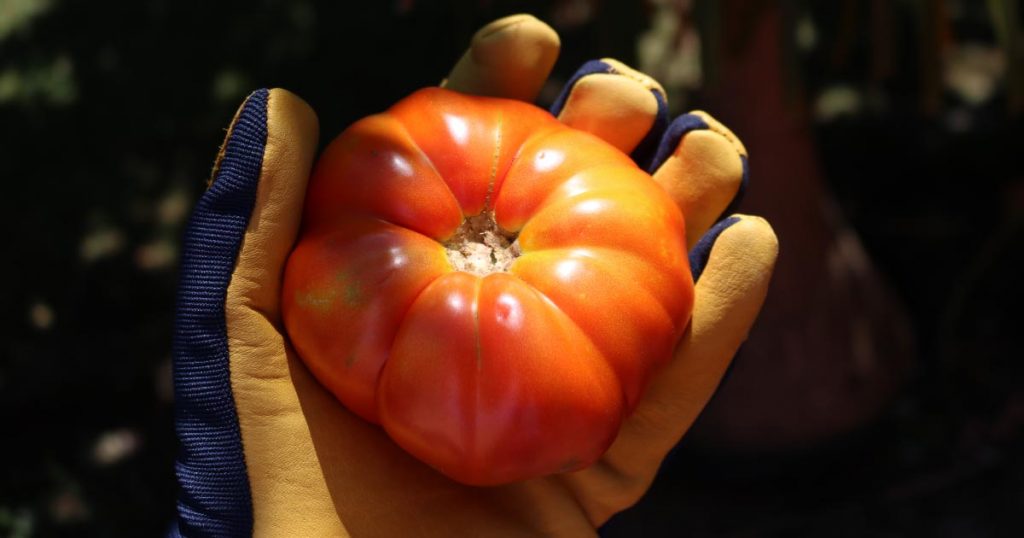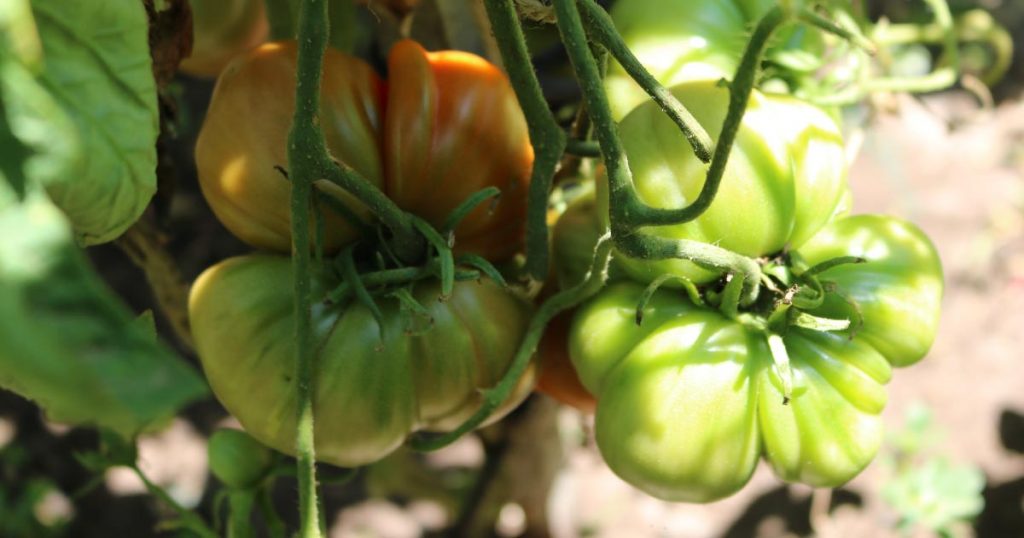Experts share advice on how to grow tomatoes
For suburban couple Con and Irene, their passion is all about eating fresh and seasonal produce they have grown at home. Their Mediterranean-themed garden is full of delicious fruits and veggies that would liven anyone’s dinner plate.
The heart of this garden is made of the forest-like assembly of climbing tomato trees, full of delicious tomatoes.
“We have had some tomatoes weighing more than 700g. Some of the other fruits and vegetables we grow are cucumbers, onions, zucchinis, lettuce, apples, plums and oranges,” Con said.
They are always expanding what they grow, and have never been afraid to start something new.
“It’s the first time in our garden we are growing grapes and rockmelon,” Irene said.
For these suburban green thumbs, eating home-grown produce is a lifestyle choice they brought as young Greek migrants more than 60 years ago.
“Eating from our garden is what we were taught as children. In the village, we would trade produce with other local growers, so we enjoyed a lot of different fruits and vegetables throughout the year,” Con said.
Every year from December to May, they are picking tomatoes and every meal is accompanied with their organic tomato salad. It is seasoned with olive oil, salt and vinegar.
Both Con and Irene shared that while gardening is their favourite pastime, more enjoyable is when they cook and share their home grown produce with family and friends.
However, growing a garden takes a lot of time and effort. And it can be an unpleasant experience when you wound, cut or scrape your hands from rocks, twigs or thorny rose bushes or even infect them from soil.

Wearing garden gloves protect your hands from the dangers
“If you look at any gardener’s hands, you will see scars and scratches,” Con said.
Looking after your garden shouldn’t come at the expense of hurting your hands.
Good garden gloves not only protect your hands but are made from a breathable material that don’t make hands feel hot and sweaty, especially when out in the garden on a warm day.
Con and Irene tried the new HydraHyde garden gloves and shared their thoughts
A big tip is to use the HydraHyde leather gloves, which are water-resistant to seal out moisture whilst also breathable to keep your hands dry.
“These gloves feel comfortable,” Irene said.
“Many garden gloves you find are rough but these feel soft,” Con said.
Tips and tricks from tomato growing insiders
After equipping yourself with a good pair of gloves, there’s many things to consider when growing tomatoes. Con and Irene reveal their tips and tricks from their 35 years experience.
Just before the middle of the tomato harvest, Con and Irene advise to start preparing the soil for the next tomato season. The use of pea straw mulch, acts as a soil conditioner to improve the soil’s water holding capacity, aeration and nutrients.

“Pea straw needs about six months to fully decompose. When it does, we then blend it into the soil existing soil,” Con said.
Another helpful tip is not to crowd the garden bed with too many plants, as this can affect their growth rate and harvest. Many plants compete for space, so it is not creating an ideal environment for growing.
“Our friends come over and ask us, how do we grow such large tomatoes? One of important thing we tell them is that they should not crowd their garden bed with too many plants,” Con said.
Keeping watch on weather forecasts is crucial for growers, especially in the summer months where we see more extreme high temperatures.
“If it’s going to be very hot the next day, water the plants the night before,” Irene said.
The roots of the tomato plants will then have more time to draw the water overnight before the hot weather.
If the tomato plants are watered in the morning of a very hot day, the water won’t have enough time to drain and will remain in the top part of the soil, which can end up boiling the roots. Feel the soil regularly to judge whether the tomato plants will need to be watered.
Finally, Con and Irene recommend having a compost bin. That way, the compost which can be made from any vegetable or fruit scraps, pruning’s and grass clippings, renews and enriches the soil with nutrients and brings more home-grown fruits and veggies to the table.
“A good gardener always looks out for what they are growing. It’s all about the preparation and being able to really devout yourself to it (the garden) if you want the best results,” Con said.